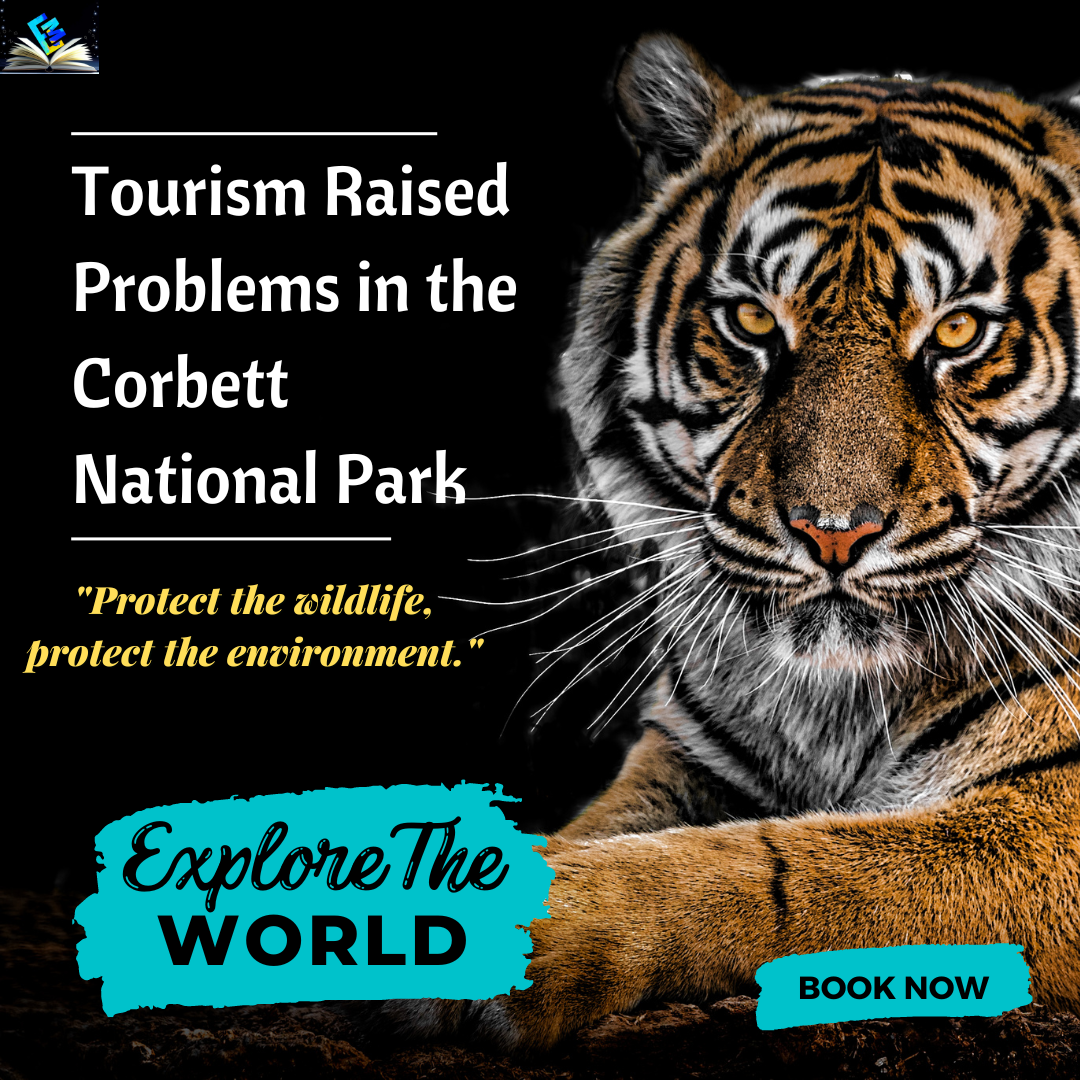
Tourism Raised Problems in the Corbett National Park
Keywords: Tourism, Corbett National Park, wildlife, environment, endangered species, revenue, habitat, pollution, tourists
Abstract
Corbett National Park is the symbol of a protective area of wildlife, especially endangered species. Definitely tourism in Jim Corbett is a very important source of income for our government but unfortunately, it harms the park as well.
In the last 10 years, the number of tourists has been increasing very fast. As the number of tourists is increasing in the Corbett National Park revenue is also increasing. Tourists and their activities create pressure on Corbett National Park. Corbett National Park is facing many problems like littering, soil pollution, noise pollution, garbage problem, habitat loss, etc.
History of Corbett National Park
In 1936, Corbett National Park, the first national park, was established in our country. Corbett National Park is our oldest national park and is rich in biodiversity. National parks are protected areas that are known for conserving and protecting wildlife. Corbett National Park is very rich in faunal and floral diversity all over the world, especially for tigers, Leopards, and Elephants.
Due to its rich biodiversity, the National Park is home to flora like Sal, Shisham, Khair, Bamboo etc. Every year several tourists come to Jim Corbett to view wildlife and play an important role in the Indian economy. As tourism is the most important source of income for our government on one hand, and on the other hand it creates many problems for wildlife, especially the endangered animals of Corbett National Park.
Problems caused in Corbett National Park
The National Park is a haven of different types of flora and fauna. Its biodiversity always attracts tourists. Every year several tourists come here to enjoy its beauty.
- Crowding affects animals’ health and behaviour as well.
- When some tourists come to the Park for visitation, they change this peaceful environment and create a crowded environment.
- The presence of humans as tourists causes a littering problem.
- Corbett National Park provides two visits in a day, so the number of vehicles entering the park is increasing, which causes noise pollution and soil pollution.
- Trampling by tourists in the park also causes the loss of biodiversity.
- For the tourists, several resorts and hotels are also constructed surrounding the parks. These hotels and resorts also negatively impact the environment of parks. These hotels and resorts provide many facilities to tourists but create many problems for the wildlife of the national park.
- Tourists damage the vegetation of the park and also create soil-related problems such as soil pollution.
- Crowding by the tourists causes distress to the wildlife.
- It is a peaceful area for wildlife but tourism crowding causes stress and anger in wildlife and changes natural behaviour.
- Hiking, vehicle use, camping etc. activities damage the vegetation.
Tourism’s impact (negative) on national parks is growing as a very big problem all over the world.
Balance Between Visitor Needs and Conservation Objectives
National parks and other protected areas are popular tourist destinations. Managers of these sites need to balance visitor needs with conservation objectives.
While tourism provides business opportunities for both site managers and local entrepreneurs. On the one hand, it might also negatively impact the local environment.
- A large number of visitors drive to or through the nature area and this traffic might negatively affect both natural and recreational values.
- If visitation is uncontrolled or visitors overuse the land, landscapes, and historic sites can degrade.
- Crowding can also produce large amounts of stress, annoyance, anger and other attitudes that will lessen the peaceful experience that tourists seek in national parks.
- Crowding can minimize the ability to enjoy scenic areas and also lessens the quality of the park’s natural resources.
- Nesting patterns of birds change, the numbers of animals begin to reduce and in worst-case scenarios, species can become extinct.
- Vegetation is being trampled, the soil is being compacted, and ecosystems are being destroyed because of the growing amounts of tourists coming into these areas.
- Direct impacts on wildlife include disruption of behaviour such as feeding, breeding, and mother-offspring interaction; poaching; killing (usually accidentally); and the disruption of predator-prey relationships.
- Indirect impacts on wildlife include changed habitats and feeding patterns, due for example to the attraction of wildlife to litter.
- The anthropogenic disturbance may reduce the use of some habitats by limiting animal movement or because animals avoid areas with high human activities (such as roads or trails)
CONCLUSION
Tourism is a big cause of disturbance in the National Park. Corbett National Park is a protected area for wildlife, especially endangered species, but unfortunately, this park is facing many problems due to humans, and tourism is an important cause of it.
To conserve the biodiversity of the National Park it is important to start some awareness programs for tourists. These programs, with the help of stick rules and regulations, are important to minimize the disturbance by tourism in Corbett National Park.
Author: Tanishka Ranjan
Mail us at edumoundofficial@gmail.com






